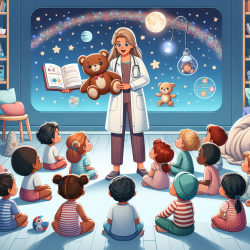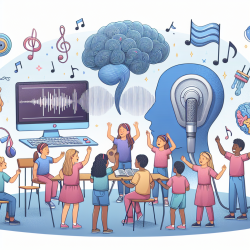You Won't Believe How This Simple Change Can Revolutionize Your Therapy Practice!

Are you ready to take your therapy practice to the next level? The latest research in social science journal editing offers valuable insights that can be implemented to enhance your skills and improve outcomes for your students. Let’s dive into the key findings from the article "A guide for social science journal editors on easing into open science" and explore how you can apply them in your practice.
Why Open Science Matters
Open science is more than just a buzzword; it’s a transformative approach that emphasizes transparency, accessibility, and credibility in research. By adopting open science practices, you can:
- Enhance the quality and reliability of your therapy methods.
- Foster a culture of continuous improvement and innovation.
- Build trust with students, parents, and school administrators.
Implementing Open Science in Your Practice
The research provides a comprehensive guide for journal editors on how to ease into open science. Here’s how you can apply these principles to your therapy practice:
1. Share Data and Materials
Transparency is key to building trust and ensuring the reproducibility of your methods. Share your therapy plans, progress reports, and any relevant data with your colleagues. This not only allows for peer review but also enables others to learn from your practices.
2. Preregister Your Therapy Plans
Preregistration involves creating a detailed, time-stamped plan before you begin therapy sessions. This can include your objectives, methods, and anticipated outcomes. By preregistering, you commit to a structured approach, reducing the risk of bias and enhancing the credibility of your results.
3. Encourage Replication Studies
Replication is a cornerstone of scientific credibility. Encourage your colleagues to replicate your successful therapy methods and share their findings. This not only validates your approach but also contributes to a cumulative knowledge base.
4. Adopt Transparent Peer Review
Open peer review involves making the review process transparent. Share feedback and evaluations openly to foster a culture of honesty and continuous improvement. This can be particularly useful in a collaborative environment like a school, where multiple professionals are involved in a student’s care.
Overcoming Challenges
Implementing open science practices may seem daunting, but the research provides practical solutions to common challenges. For instance, you might worry about the additional administrative burden or the potential resistance from colleagues. However, the benefits far outweigh these concerns, and the guide offers step-by-step instructions to ease the transition.
Continuous Learning and Improvement
The journey towards open science is ongoing. Stay updated with the latest research and be open to feedback. Join online communities or forums where you can share your experiences and learn from others. Remember, the goal is to continuously improve your practice for the benefit of your students.
Conclusion
By implementing open science practices, you can significantly enhance the quality and effectiveness of your therapy sessions. Embrace transparency, encourage replication, and foster a culture of continuous improvement. Your students will thank you for it!To read the original research paper, please follow this link:
A guide for social science journal editors on easing into open science.
Citation: Silverstein, P., Elman, C., Montoya, A., McGillivray, B., Pennington, C. R., Harrison, C. H., Steltenpohl, C. N., Röer, J. P., Corker, K. S., Charron, L. M., Elsherif, M., Malicki, M., Hayes-Harb, R., Grinschgl, S., Neal, T., Evans, T. R., Karhulahti, V. M., Krenzer, W. L. D., Belaus, A., Moreau, D., Burin, D. I., Chin, E., Plomp, E., Mayo-Wilson, E., Lyle, J., Adler, J. M., Bottesini, J. G., Lawson, K. M., Schmidt, K., Reneau, K., Vilhuber, L., Waltman, L., Gernsbacher, M. A., & Plonski, P. E. (2024). A guide for social science journal editors on easing into open science. Research Integrity and Peer Review, 2058-8615. https://doi.org/10.1186/s41073-023-00141-5










